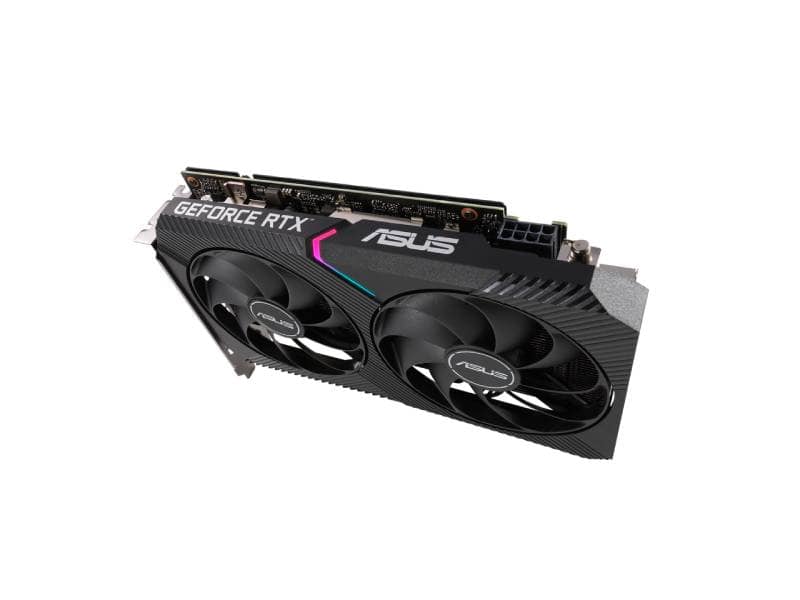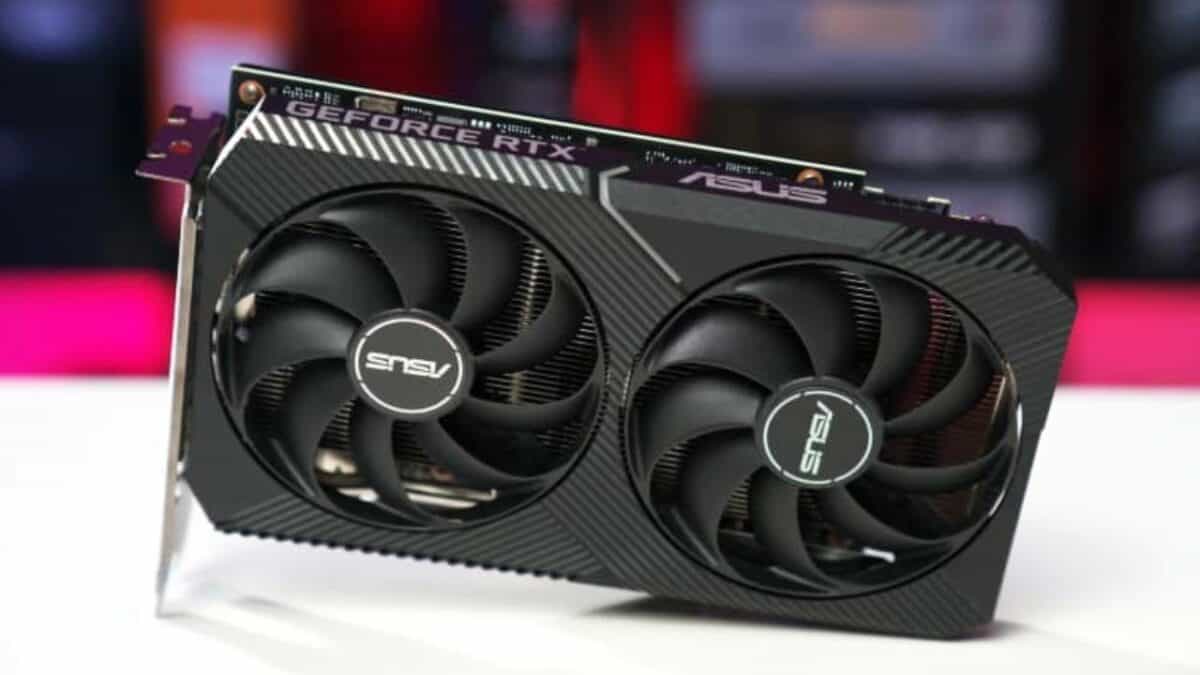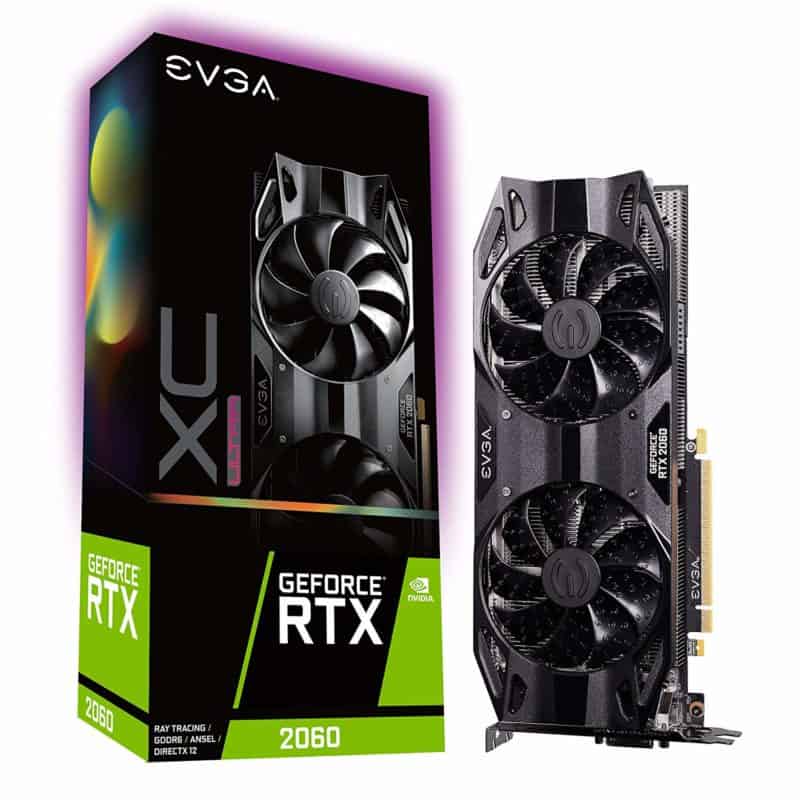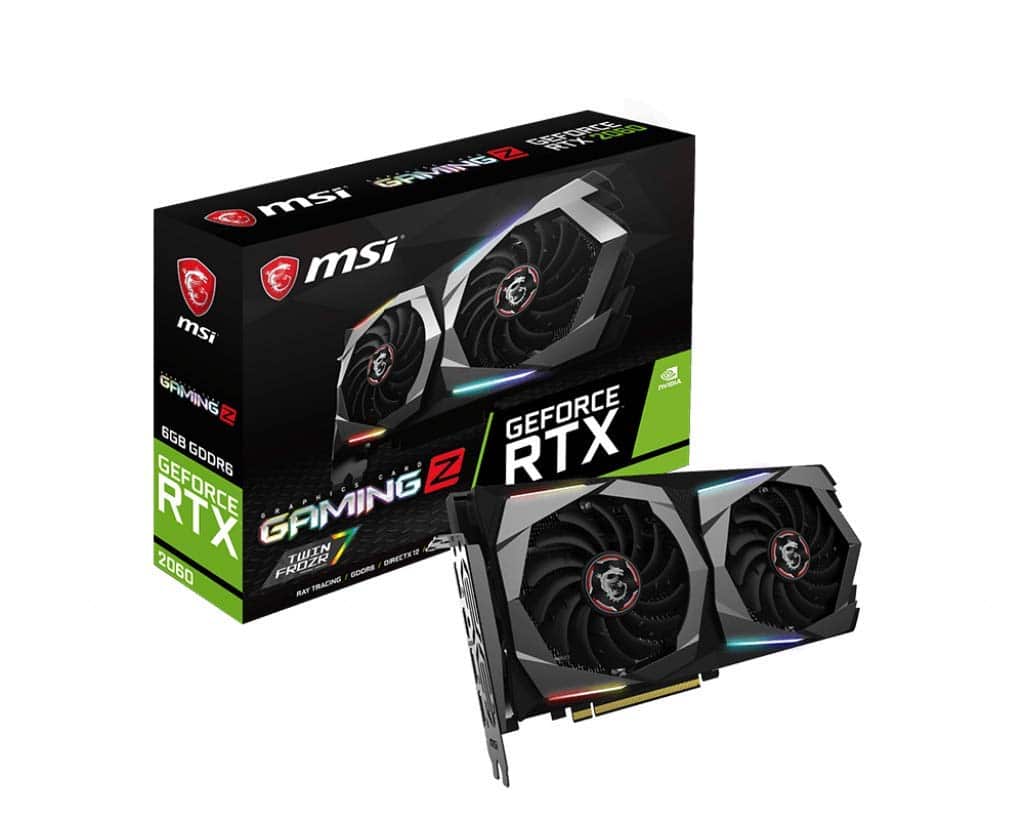RTX 3050 6GB

Power efficient, 70W TDP
Can run without external power
Inexpensive
Small form factor cards available
20% worse performance than 8GB model
Limited performance at higher resolutions
Shop on Amazon
CHECK PRICEComparing RTX 3050 6GB vs RTX 2060 6GB to see which is the best

WePC is reader-supported. When you buy through links on our site, we may earn an affiliate commission. Prices subject to change. Learn more
These days, 8GB or higher is what many buyers look for in a graphics card for gaming, but today we can look at the RTX 3050 6GB vs RTX 2060 for two 6GB GPUs which are well worth comparing. The 6GB variant of the RTX 3050 is a later arrival to 30 series of Nvidia’s GeForce cards, designed for low power builds and/or budget gaming PCs. It is also worth noting that a 12GB version of the RTX 2060 did release a couple of years after the original, so we’ll touch on that as well. We did an RTX 3050 review for the older 8GB model too, if you’re interested.
We’ve already compared this RTX 3050 6GB vs RTX 4060, so let’s see how the specs, performance, and price changes when we jump back a couple of generations. The 20 series introduced the ray tracing-ready RTX cards, but the 30 series took that a step further, the 6GB 3050 being a particularly modest GPU to benefit from it. Our 8GB RTX 3050 vs RTX 2060 guide is also worth a read while you’re here.

Power efficient, 70W TDP
Can run without external power
Inexpensive
Small form factor cards available
20% worse performance than 8GB model
Limited performance at higher resolutions
Shop on Amazon
CHECK PRICE
Very attractive design
Powerful dual fan heatsink
One of the fastest clock speeds in this list
Can become warm if stressed
| Specification | RTX 3050 6GB | RTX 2060 |
|---|---|---|
| GPU | GA107 | TU106 |
| Architecture | Ampere | Turing |
| GPU process | Samsung 8nm | TSMC 12nm |
| CUDA cores | 2,304 | 1,920 |
| Base clock speed | 1,042 MHz | 1,365 MHz |
| Boost clock speed | 1,470 MHz | 1,680 MHz |
| VRAM | 6GB GDDR6 | 6GB / 12 GB GDDR6 |
| Memory bandwidth | 168 GB/s | 336 GB/s |
| Memory bus | 96-bit | 192-bit |
| Memory clock | 14 Gbps | 14 Gbps |
| TDP | 70W | 160W |
This pair of GPUs come with a 6GB model, though the RTX 2060 does have a 12GB variant. This helps with higher resolution gaming on paper, but considering it uses the same bandwidth and bus interface, the difference is somewhat limited. By looking at the rest of the specs, we can see that RTX 2060 is actually more powerful than the newer RTX 3050 6GB, particularly looking at clock speed and memory.
The newer GPU does benefit from some more CUDA cores for better processing power and much better efficiency on the smaller 8nm process, with just a 70W TDP – meaning it doesn’t require external power and can run from your PCIe slot alone. Both of these cards represent the very entry-level SKUs for their respective series.
Looking at the specs above alone does show that both cards have their strengths and weaknesses, with the RTX 2060 looking to pull ahead in terms of raw power. This translates to the performance as you’d expect. Performance is often the number one factor for gamers looking for high framerates in their favorite games, so how do these budget graphics cards perform?
We can look to gaming benchmarks such as this video that compares the RTX 3050 and RTX 2060. Keep in mind that this compares the 3050 8GB and 2060 6GB, showing that the 2060 offers better performance on average, albeit by around 10 FPS or less in many titles. To compare with the RTX 3050 6GB, German publication ComputerBase reports about a 20% decrease in performance, allowing the RTX 2060 6GB to pull even further ahead of the RTX 3050 6GB. These cards are designed for 1080p gameplay, but can manage 1440p just fine outside of demanding AAA games.

Clock Speed
1830 MHz
VRAM
6GB GDDR6
Memory Bus Width
192 bit
First taking a look at the recommended price tags at launch for these GPUs is a good way to start. The RTX 2060 6GB model had a MSRP of $349 for the original, while a refreshed version the following year cost just $300 at launch. As for the RTX 3050 6GB, Nvidia haven’t released a Founders Edition of the card, which means we can look to partnered cards which start around the $169.99 mark, many also costing $179.99 depending on manufacturer, overclocking, and so on.
The RTX 2060 has been out for much longer, and as such, is common to find second-hand if you want to save some cash – though we can’t guarantee quality here. At the time of writing, you can find the RTX 2060 new for a range of prices, but it is consistently more expensive than the 3050 6GB.
Deciding between these two is pretty tough in all honesty. The RTX 2060 does perform a little better overall, especially if you opt for the 12GB card, but the 3050 6GB is super efficient and based on newer architecture with improved ray tracing and tensor cores, which will help it in the upscaling department, though now even 20 series cards benefit from DLSS 3.5 ray reconstruction.
If you’re looking for the best raw gaming performance, opt for the RTX 2060, even if it is the 6GB model. We’d also suggest the 2060 Super to bring up to to 8GB alongside other improvements. On the other hand, the RTX 3050 6GB is a fantastic choice if efficiency is your main concern. You can power it from your motherboard’s PCIe alone and it fits right into any low-power rig.
We’ve come to the end of our RTX 3050 6GB vs RTX 2060 comparison, hopefully providing you the knowledge you need to make an informed decision between these two. Despite both feature 6GB of VRAM, there are some considerable differences between them given the generational gap. It’s hard to beat the 3050’s efficiency here, but the 2060 is more powerful to push out more frames per second while gaming.
If you want to learn more about this intriguing 3050 SKU, see our RTX 3050 6GB vs GTX 1080 and RTX 3050 6GB vs RTX 3050 8GB guides.